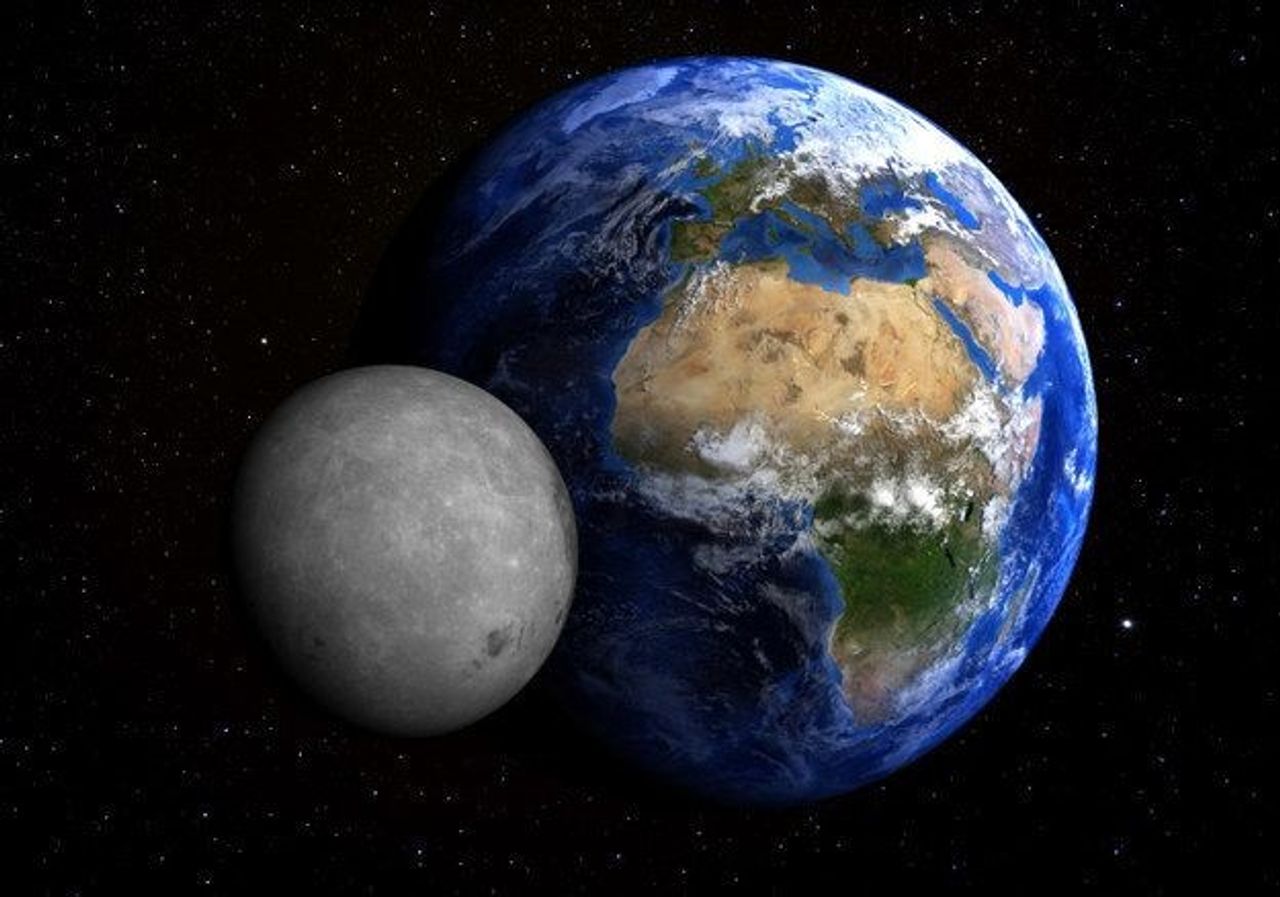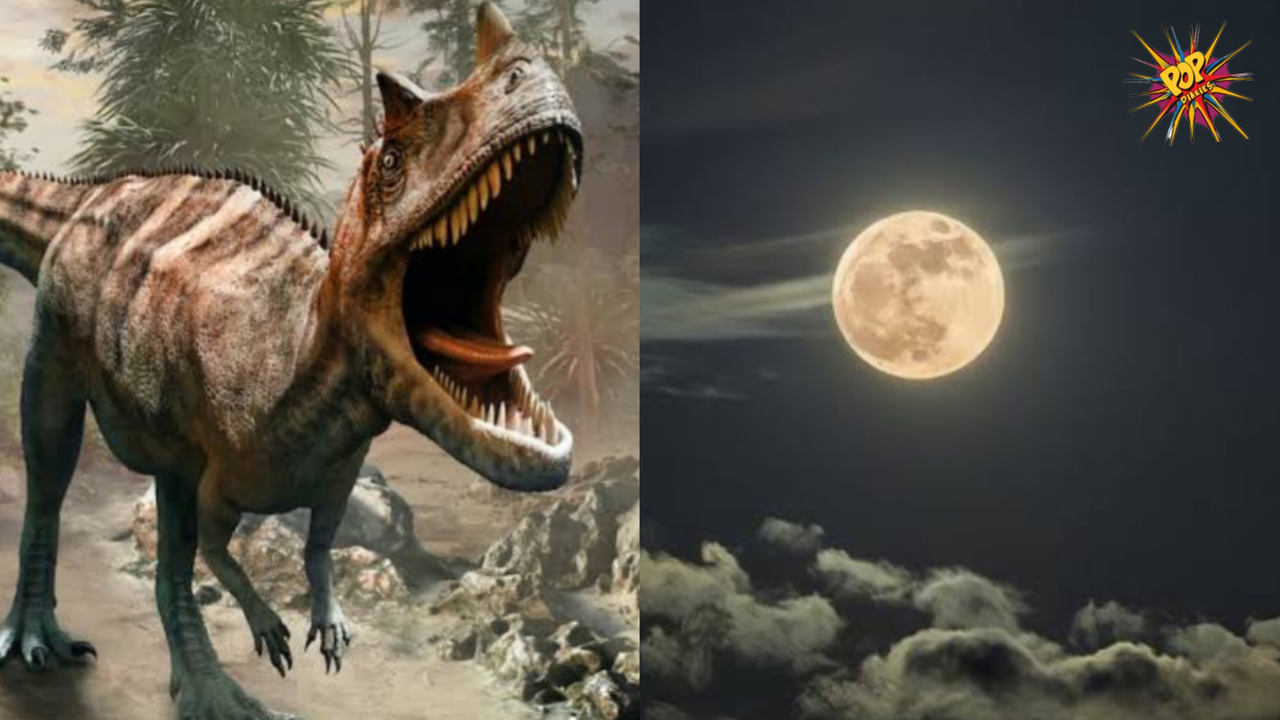During the age of dinosaurs, spanning from about 230 to 66 million years ago, the Moon was experiencing a period of notable geological activity,...
Vous n'êtes pas connecté
- English
- Français
- عربي
- Español
- Deutsch
- Português
- русский язык
- Català
- Italiano
- Nederlands, Vlaams
- Norsk
- فارسی
- বাংলা
- اردو
- Azərbaycan dili
- Bahasa Indonesia
- Հայերեն
- Ελληνικά
- Bosanski jezik
- українська мова
- Íslenska
- Türkmen, Түркмен
- Türkçe
- Shqip
- Eesti keel
- magyar
- Қазақ тілі
- Kalaallisut ; kalaallit oqaasii
- Lietuvių kalba
- Latviešu valoda
- македонски јазик
- Монгол
- Bahasa Melayu ; بهاس ملايو
- ဗမာစာ
- Slovenščina
- тоҷикӣ ; toğikī ; تاجیکی
- ไทย
- O'zbek ; Ўзбек ; أۇزبېك
- Tiếng Việt
- ភាសាខ្មែរ
- རྫོང་ཁ
- Soomaaliga ; af Soomaali
 Maroc - POPDIARIES.COM - A La Une - 17/Aug 06:12
Maroc - POPDIARIES.COM - A La Une - 17/Aug 06:12
Why the Moon is Slowly Drifting Away from Earth
The Moon’s gradual retreat from Earth is a fascinating phenomenon rooted in the interplay between gravitational forces and the dynamics of tidal interactions. This process, occurring at an average rate of about 3.8 centimeters per year, has been observed and studied extensively, offering insights into the long-term evolution of our planet-moon system. Tidal Forces and Energy Dissipation The primary mechanism driving the Moon's gradual drift is the interaction between Earth’s gravitational pull and the Moon's orbit. The Earth exerts a significant gravitational force on the Moon, creating tidal bulges in the planet's oceans. These bulges are not perfectly aligned with the Earth-Moon axis due to Earth's rotation. As Earth rotates, these tidal bulges are slightly ahead of the line connecting the centers of Earth and the Moon. This misalignment creates a gravitational tug on the Moon, effectively pulling it away from Earth. This process is a result of the dissipation of energy within the Earth. The tidal bulges caused by the Moon's gravity generate frictional forces within Earth's oceans and crust, leading to the conversion of rotational energy into heat. This loss of rotational energy causes Earth’s spin to gradually slow down, and as a consequence, the Moon’s orbit expands, making it move away from Earth. Angular Momentum Transfer The transfer of angular momentum is a crucial aspect of this interaction. As Earth’s rotation slows down due to tidal friction, angular momentum is conserved by transferring it to the Moon’s orbit. This transfer results in an increase in the Moon’s orbital radius, causing it to slowly drift away from Earth. The conservation of angular momentum is a fundamental principle of physics, ensuring that the total angular momentum of the Earth-Moon system remains constant even as Earth’s rotation slows. Geological and Astronomical Evidence Geological and astronomical evidence supports the understanding of the Moon’s gradual recession. Fossil records of ancient tidal patterns indicate that the length of Earth’s day was shorter in the distant past, suggesting that tidal forces have been altering the Earth-Moon system for billions of years. Additionally, laser measurements taken from retroreflectors left on the Moon’s surface by Apollo missions provide precise data on the Moon's distance from Earth, corroborating the observed rate of its recession. Long-Term Implications The gradual distancing of the Moon has significant long-term implications for Earth. Over geological timescales, the slowing of Earth’s rotation and the increasing distance between Earth and the Moon will alter the dynamics of tidal forces. This change could eventually affect the length of Earth’s day and the stability of the Moon’s orbit. However, these processes occur over millions to billions of years, meaning their effects are gradual and not immediately noticeable. SUMMARY The Moon's slow drift away from Earth is a result of tidal interactions between the two celestial bodies, where energy dissipation and angular momentum transfer play key roles. This fascinating phenomenon provides valuable insights into the dynamics of celestial systems and the long-term evolution of planetary bodies. The ongoing study of this process helps scientists better understand the intricate dance between Earth and its natural satellite. READ MORE - The Spectrum of Attachment Styles: Insights and Explanations
Articles similaires
Gigantic Asteroid Impact Shifted Axis Of Solar System’s Biggest Moon
Around 4 billion years ago, an asteroid hit the Jupiter moon Ganymede. Now, a Kobe University researcher realized that the Solar System's biggest...
Gravitational Waves Unveil Previously Unseen Properties Of Neutron Stars
A better understanding of the inner workings of neutron stars will lead to a greater knowledge of the dynamics that underpin the workings of the...
What is space made of? An astrophysics expert explains all the components
Curious Kids is a series for children of all ages. If you have a question you’d like an expert to answer, send it to...
💕( ͡° ͜ʖ ͡°)📖 (“Why does all light forces’ action have to be ‘behind the scenes?’) Matthew's Message via Suzy ~ Sept 5, 2024 ~ |
Channeled by Suzy Ward© 2024 matthewbooksEditor's Note: Wauv! 'The Light Forces erected a powerful light grid around Earth and right now benevolent...
NASA, Boeing Welcome Starliner Spacecraft To Earth, Close Mission
NASA and Boeing safely returned the uncrewed Starliner spacecraft following its landing at 10:01 p.m. MDT Sept. 6 at White Sands Space Harbor in New...
We discovered a new way mountains are formed – from ‘mantle waves’ inside the Earth
In 2005, I was navigating winding roads through the Drakensberg Mountains, in Lesotho, Southern Africa. Towering cliff-like features known as...
Meet Phaethon, a weird asteroid that thinks it’s a comet
What’s the difference between an asteroid and a comet? A comet is basically a dirty iceball composed of rock and ice. The classic image is of a...
Scientists uncover hidden magma activity at Chang’e-6 lunar landing site
Scientists have made an exciting discovery at the landing site of China’s Chang’e-6 mission on the moon’s farside. The mission, which is part of...
Pedras Negras in Angola
Pedras Negras in Angola There are many top geological sites to visit when you travel through Africa. Excerpt from the book Africa’s top geological...
Les derniers communiqués
-
Aucun élément





